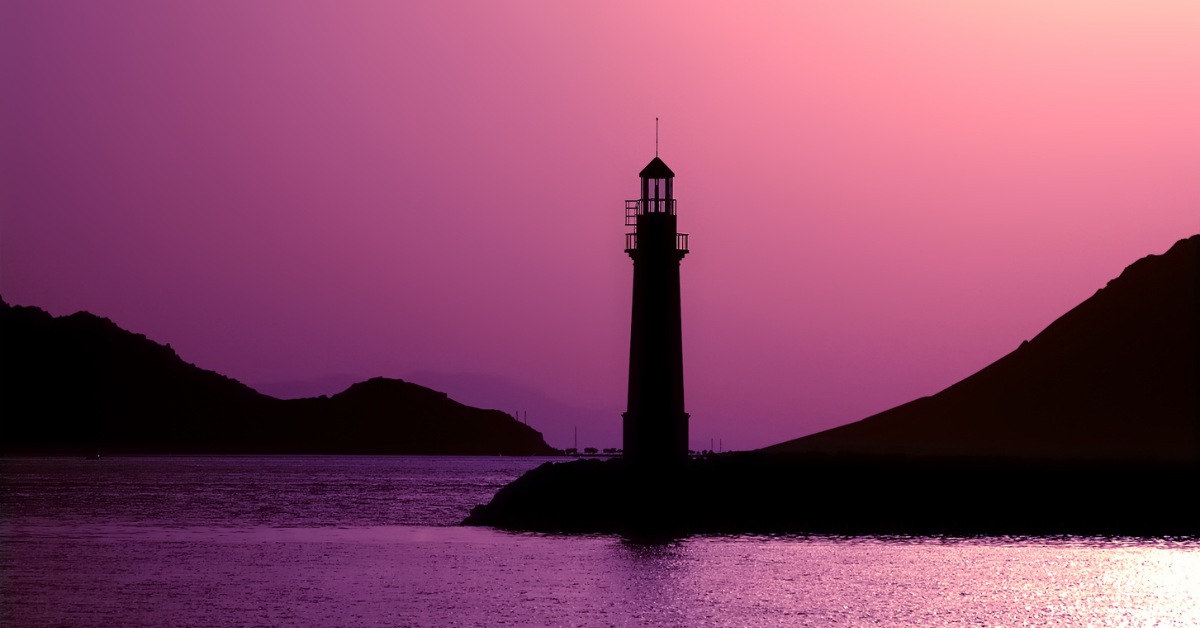When picturing Long Island, it is hard to have anything other than a lighthouse as the first image that comes to mind. These iconic buildings are the quintessential landmark that locals and tourists alike associate with the Island. To many, the beacon symbolizes more than just the beaches and calm waters – it reminds us of the comforts of home and where we came from. For others, it evokes fond memories of family vacations out east or trips to some of the local Long Island beaches on a warm summer’s day.
No matter what Long Island Lighthouses evoke in your mind, it is undeniable that they are an important part of the history of Long Island. Make sure to visit a Long Island Lighthouse if you’re visiting, or even if you’re a local just looking to experience Long Island heritage. Lighthouses are a unique piece of history that is not to be missed.
At nearly 120 miles in length, Long Island holds some of the most beautiful lighthouses in the United States, including quite a few that welcome visitors to climb to their perches to enjoy spectacular views of the Atlantic Ocean. Many Long Island lighthouses are accessible via private tours and boat trips.
Long Island is home to over 25 New York lighthouses, each with a history and story of its own. One of the most famous New York lighthouses is the Montauk Point Lighthouse, commissioned by George Washington in 1796. It is one of three Long Island lighthouses that permit a climb to the top of the tower, along with Fire Island Lighthouse and Horton Point.
I was fortunate recently to be back up on the Island and have the opportunity to go out to the Montauk Point Lighthouse, and I have been to the Fire Island Lighthouse numerous times while growing up in Brightwaters (Bay Shore area). I look forward to visiting there again real soon.
I am providing an overview of many of Long Island’s Lighthouses. Unfortunately there are some that are on private land and are therefore inaccessible.
Execution Rocks Lighthouse
Port Washington, NY
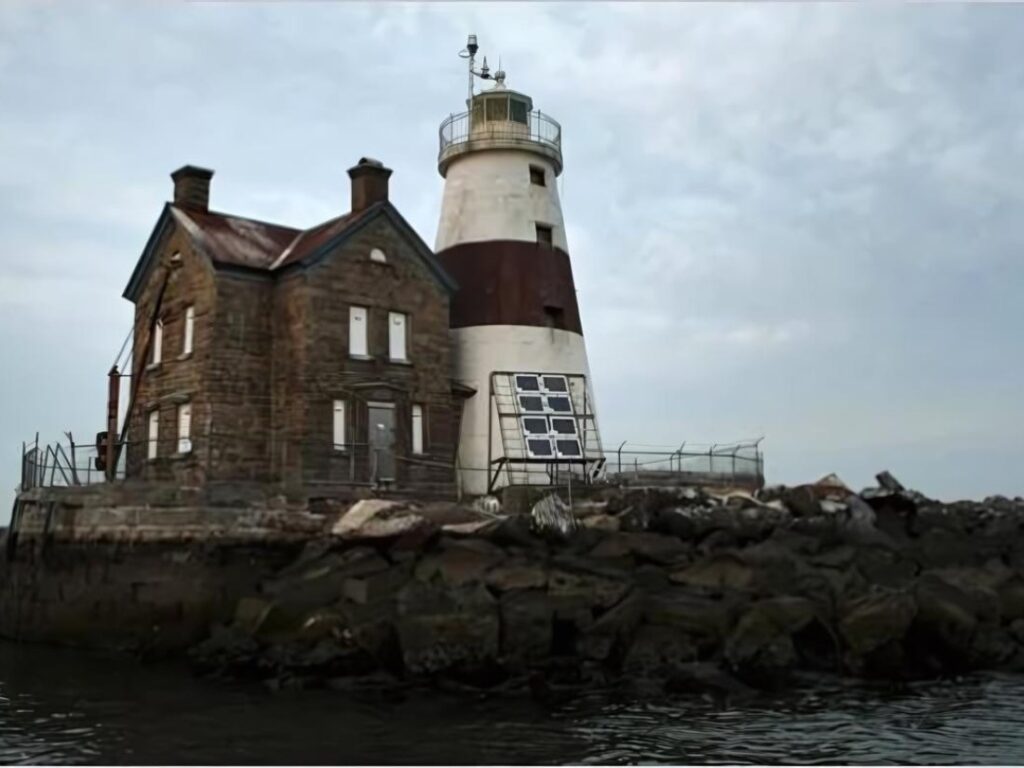
Execution Rocks Light Station, an offshore light, is located in the northwestern portion of the Long Island Sound in the center of the channel between Sands Point and New Rochelle, New York. It is about one mile offshore.
The light station is on a protective artificial island with a small boat basin. The light station was established in 1849, and the tower was first lit in 1850. The Light Tower was designed by Alexander Parris. It is built from granite and is an example of wave-swept tower engineering. The goal is to restore the light keeper’s dwelling into a Bed and Breakfast.
The three-hour tour from Port Washington Town Dock on Main Street in Port Washington is a joy for tourists and history buffs.
Fire Island Lighthouse
Robert Moses State Park Field # 5, Fire Island, NY 11770
Located on Fire Island National Seashore just east of Robert Moses State Park. Walk the scenic boardwalk, climb to the top of the tower, visit the museum, and see the original 1858 Fresnel lens on display.
The Fire Island Lighthouse Preservation Society’s mission is to preserve, maintain, and operate the Fire Island Lighthouse and keeper’s quarters to promote Long Island’s heritage and culture. It is also east of the Robert Moses State Park.
The first Fire Island Light blinked on in 1826 to guide ships to New York Harbor with a beacon 74 feet above sea level. However, shipwrecks continued to occur, and the U.S. Lighthouse Board decided the beacon was too low for a major coastal light. Congress appropriated $40,000, and the current 166-foot brick tower was illuminated on November 1, 1858, and became the first light sighted by transatlantic ships and tens of thousands of immigrants. The black and white bands on the tower were added in 1891.
The lighthouse, with its classic beehive-shaped Fresnel lens throwing a beam 21 miles, went dark in 1974 and was replaced by an automated light on the water tower adjacent to Robert Moses State Park. However, as a result of the $1.2 million raised by the Fire Island Lighthouse Preservation Society, the Fire Island Light has been relit with an automated beacon.
Horton Point Lighthouse
Lighthouse Road, Southold, NY 11971
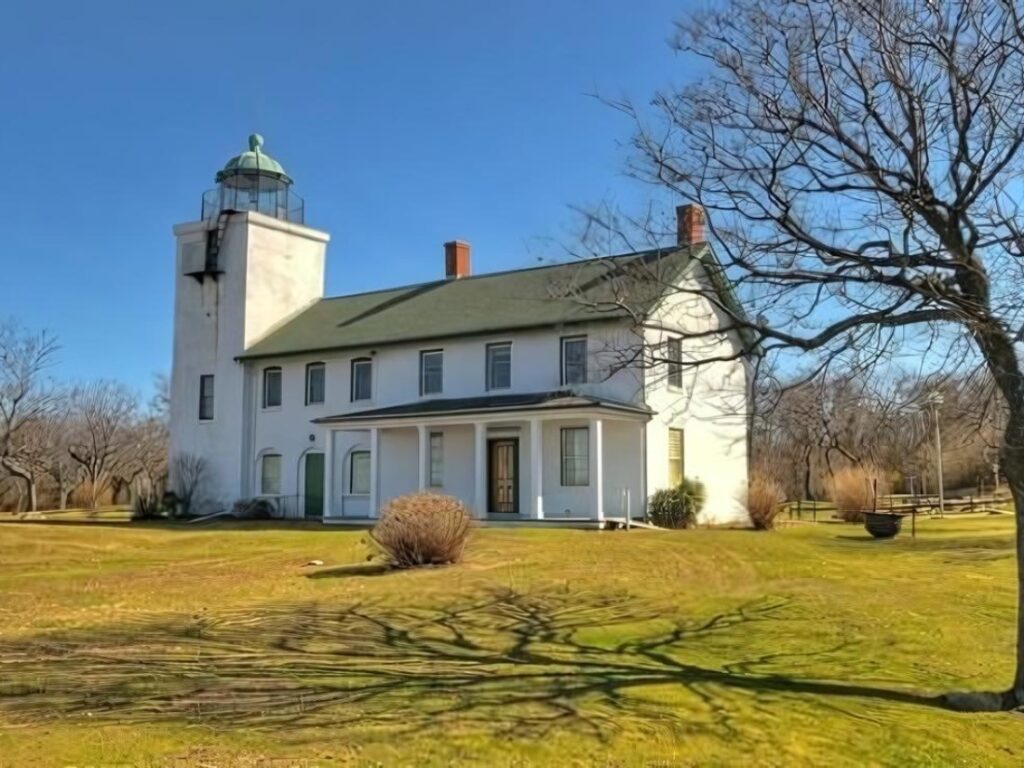
Open to public weekends during the summer. Horton Point Lighthouse is on the north fork of Eastern Long Island.
The current lighthouse was established, and the tower was first lit in 1857. The site is on a bluff 60 feet above Long Island Sound. The tower was automated in 1933 and is now operational. The light was deactivated from 1933 to 1990.
The foundation is granite, and the lighthouse is built out of granite and brick with stucco. The tower is 58 feet high, with the focal plane of the light being 103 feet above sea level. The tower is white, with a black lantern and a copper dome. The light has a slow green flash every ten seconds.
Cedar Island Lighthouse
Cedar Point County Park, East Hampton, NY 11937
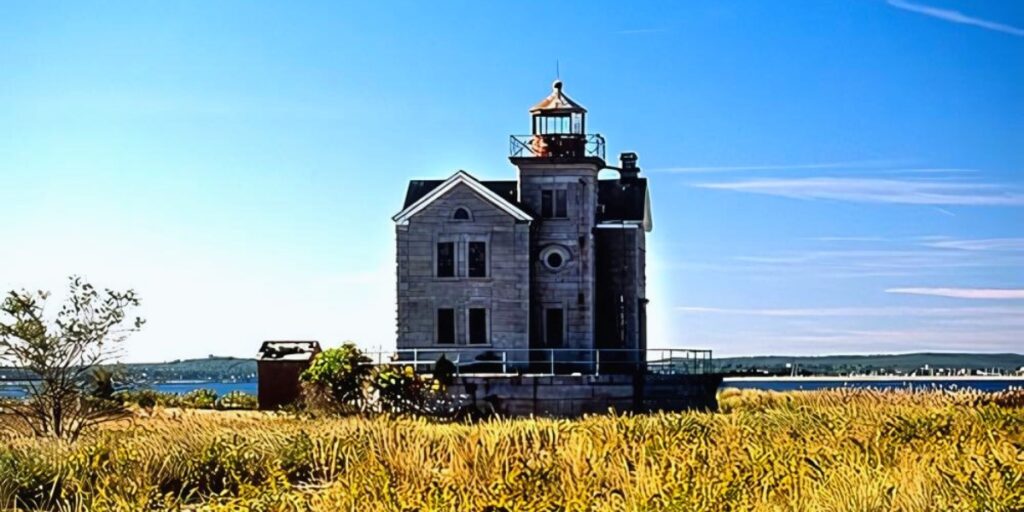
The lighthouse is the subject of a preservation project. The lighthouse is situated on Cedar Island, just off of Cedar Point, between the waters of Northwest Harbor and Gardiners Bay.
Settled in 1651, Cedar Point was once a busy port for shipping farm goods, fish, and timber from Sag Harbor. The historic Cedar Point Lighthouse stood on an island 200 yards from shore when it was built in 1860. Its beacon served to guide whaling ships in and out of Sag Harbor during its heyday as a major port. The hurricane of 1938 transformed the shoreline, shifting sands to create a narrow, walkable strip that now connects the lighthouse with the mainland.
Cold Spring Harbor Lighthouse
Centre Island, Cold Spring Harbor, NY 11724

Currently located on private property on Centre Island. Cold Spring Harbor Light was a lighthouse located in Cold Spring Harbor on the North Shore of Long Island.
It was built in 1890 to mark a shoal at the entrance to Cold Spring Harbor. After the lighthouse was deactivated in 1965, the original light and tower were purchased by a private individual and moved to its current location on land, 1 mile to the southwest. An automated light tower and day beacon were erected on the original caisson and continue to serve as a navigation aid.
Huntington Harbor Lighthouse
Huntington Harbor Lighthouse, formerly known as Lloyd Harbor Lighthouse, is located in Huntington Bay.
The lighthouse was established in 1857, and the current tower was first lit in 1912. The light was automated in 1949 and is still operational. The foundation and lighthouse are made of cast-reinforced concrete. The reinforced concrete foundation and structure are unique to the area. The foundation for the light was built nearby on land, then floated to the site and sunk. The tower is a square “castle” in the Beaux-Arts style. In 1912, a fifth-order Fresnel lens was installed.
In 1857, a lighthouse was built on the tip of Lloyd’s Neck to assist ships in finding shelter in Lloyd Harbor from the wind and waves that often hinder navigation on the Long Island Sound. This first lighthouse, called the Lloyd Harbor Light, was of little help to ships entering Huntington Harbor. In 1912, a new lighthouse was built to serve Huntington Harbor. In 1949, the light was fully automated.
The deterioration of the unoccupied lighthouse started and would continue for almost two decades. As a result of a 1983 survey, the light was deemed unsafe for servicing personnel and too expensive to repair. The Coast Guard considered demolishing the lighthouse and erecting a steel tower. In 1985, a group called Save Huntington’s Lighthouse was formed by local citizens to save the lighthouse from demolition. It became the first private group in the country to successfully take over and restore an offshore lighthouse.
The lighthouse was placed on the National Register of Historic Places in 1988 under the name of Lloyd Harbor Lighthouse.
Latimer Reef Lighthouse
Located off the northeast end of Fisher’s Island
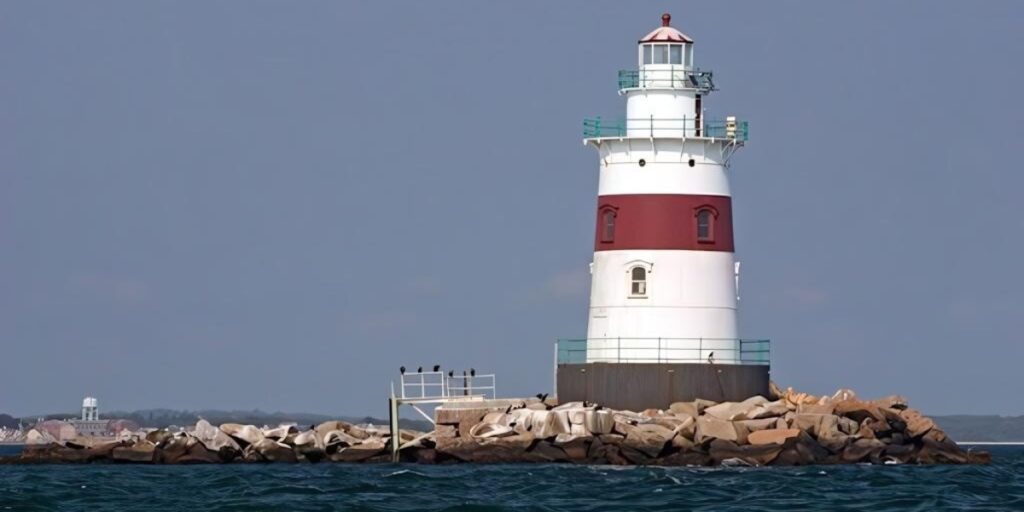
Latimer Reef Lighthouse is a sparkplug lighthouse located at Latimer’s Reef in Fishers Island Sound. The lighthouse is located one-mile northwest of East Point on Fisher’s Island, New York.
Originally called Latemore’s Reef after James Latemore. The property was described as Latimer Reef Light was completed in 1884. It sits in 18 feet of water at the western end offshore of Fisher’s Island Sound.
The light includes a 30-foot-diameter cylindrical caisson foundation painted brown. The caisson is filled with concrete. This foundation supports a 46-foot cast iron superstructure that includes a four-story conical tower topped by a one-story cylindrical watch room and a decagonal lantern. The tower, watch room, and lantern are painted white with a brown stripe, a full story tall around the tower’s third story.
The property is listed on the National Register of Historic Places.
Little Gull Island Lighthouse
East Plum Island, Plum Island, NY
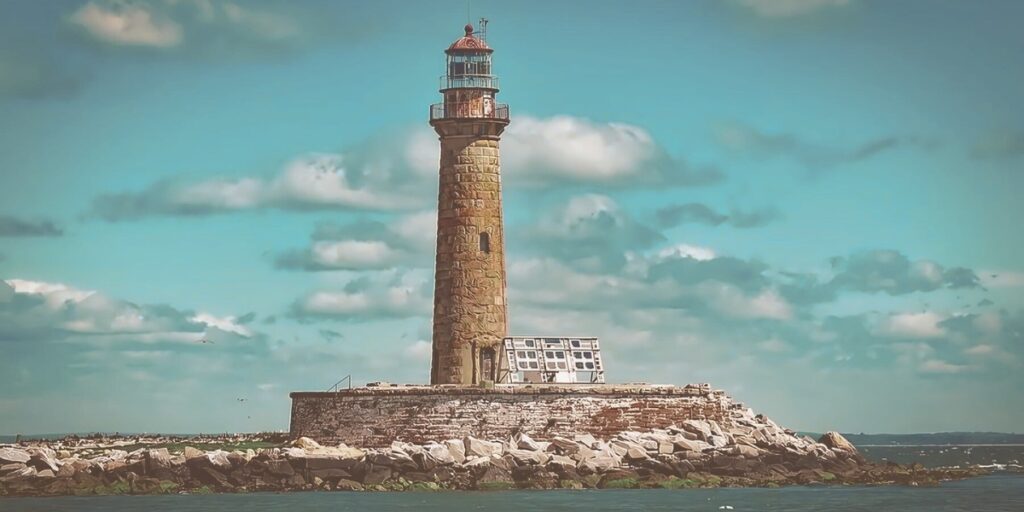
The first lighthouse was a 51-foot high tower established in 1806, which was replaced by the current 81-foot conical tower and a second-order Fresnel lens in 1869. The lighthouse was automated in 1978 and is still operational. The foundation is a granite pier, and the construction material is granite.
The U.S. Coast Guard has identified Little Gull Island Light as one of its Historic Light Stations in New York. In 2009, Little Gull Island Light was put up for sale under the National Historic Lighthouse Preservation Act.
North Dumpling Lighthouse
Fisher’s Island, New York
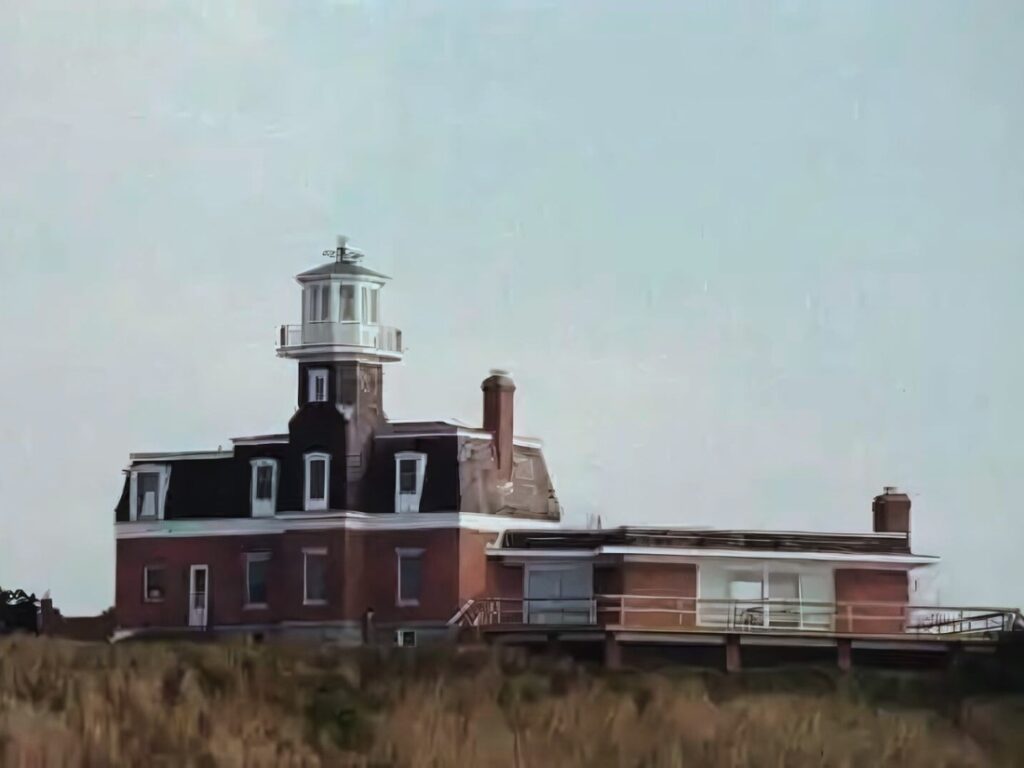
North Dumpling Island is the northernmost of two islands in Fishers Island Sound, located about 0.3 nautical miles north of South Dumpling Island. The two-acre Island is privately owned by Dean Kamen and is home to the North Dumpling Lighthouse. It is a mile off the coast of Connecticut, south of Groton, Connecticut, but is within the territory of the town of Southold in New York State.
Race Rock Lighthouse
Located off the west end of Fisher’s Island
Mariners cannot help but admire this lighthouse perched on the notorious Race Rock. Built-in 1879, the gothic revival Keeper’s Quarters support the square and octagonal tower. An engineering feat in its time, this sentinel stands as a magnificent example of Victorian charm. The reef is a dangerous set of rocks off the coast of Fishers Island on Long Island Sound and was the site of many shipwrecks.
Race Rock Lighthouse was built between 1871 and 1878. Designed by Francis Hopkinson Smith, the lighthouse is an excellent example of 19th-century engineering and design. The massive masonry foundations on the reef required seven years to complete. Once the foundations were secure, the stone structure, including the keeper’s quarters and the tower, was built in only nine months. The lighthouse has a fourth-order Fresnel lens in a tower standing 67 feet above the waterline. The lighthouse was automated in 1978 by the Coast Guard.
Some believe the lighthouse to be haunted, but it was featured on an episode of Ghost Hunters and seen in the show’s opening credits.
Plum Island Lighthouse
Plum Island, New York
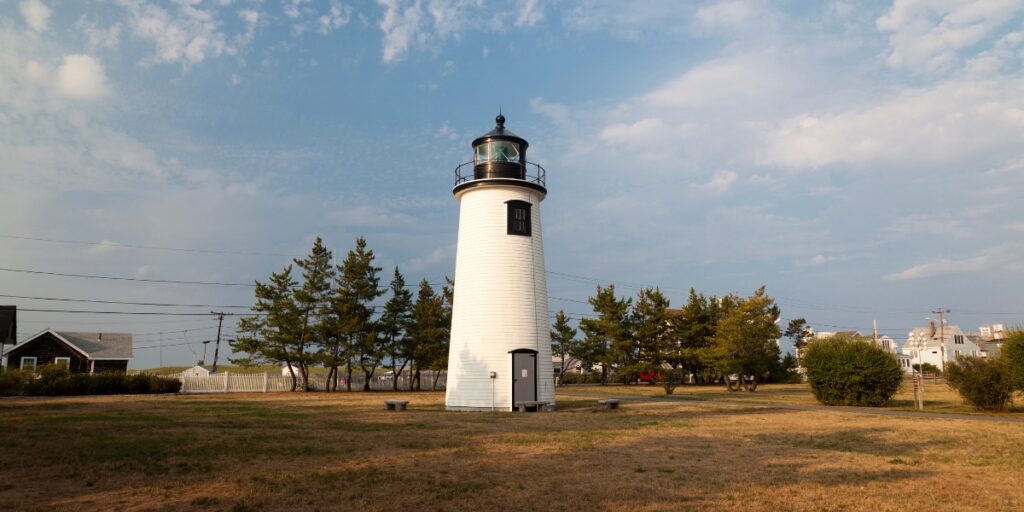
Plum Island Lighthouse is located on the western end of Plum Island, east of Orient Point.
A historic granite lighthouse originally built in 1869 sits at the site but no longer serves as an active aid to navigation. The lighthouse was put on the National Register of Historic Places in 2011. A short distance northwest of the granite lighthouse building is a 14-foot metal tower that holds the automated light that has served as an aid to navigation since the earlier light was decommissioned in 1978.
In 1826, the west end of Plum Island was purchased from Richard Jerome for $90 to build a lighthouse. The following year, a 35-foot-high stone tower had been constructed to support the first light. That first light consisted of ten whale oil lamps with reflectors. The light helped navigation near the entrance to Long Island Sound, through the channel between Orient Point and Plum Island.
In 1856, the original lamps and reflectors were replaced by a sixth-order Fresnel lens. Keepers were removed from Plum Island in 1978 when the light was automated on a structure built to the side of the 1869 lighthouse. In 1994, the Fresnel lens was removed from the lighthouse and is on display at the East End Seaport Museum in Greenport. In 2007, a resolution was passed by the Town of Southold that would transfer ownership of the lighthouse to the town and eventually refurbish and relight the Lighthouse.
The Plum Island Lighthouse, like all of Plum Island, is not open for public visits. The light may be seen from the water, but landing on the Island is restricted to persons authorized by the United States Department of Homeland Security.
Montauk Point Lighthouse Museum
Montauk, NY 11954
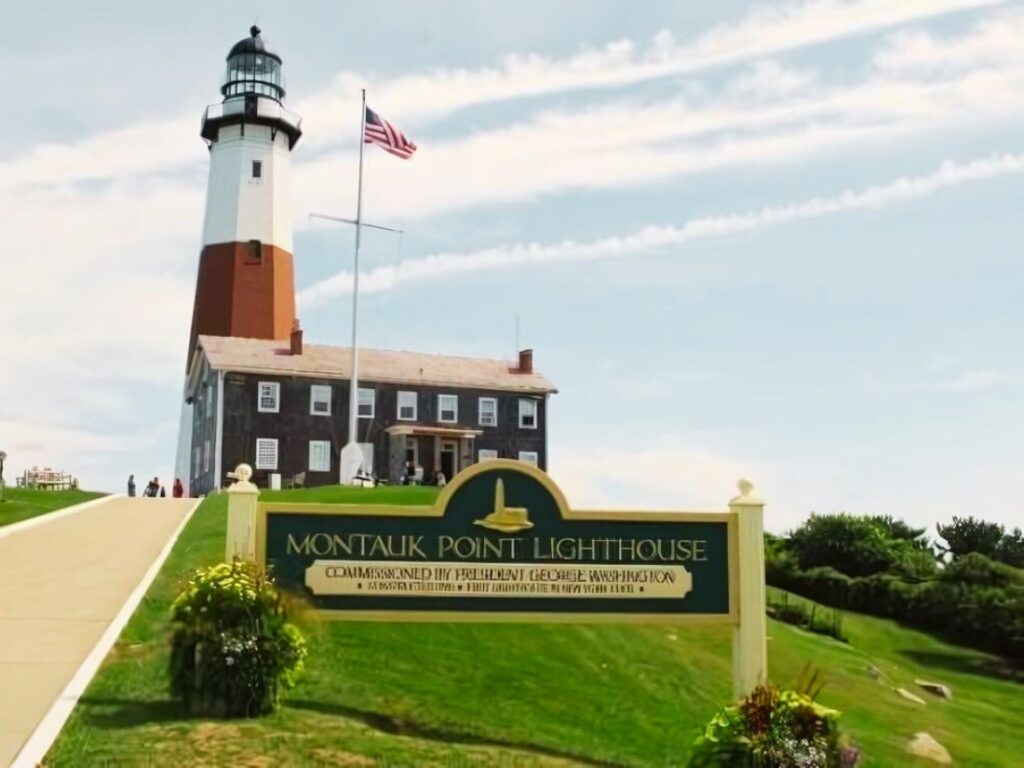
National Maritime Historic Landmark; this is the oldest lighthouse on Long Island, as well as the oldest in New York State, completed in 1796 on a spot where the Royal Navy had maintained signal bonfires for its ships during the American Revolution. Congress appropriated funds in 1794 to buy the site. Three years later, President George Washington authorized the construction of the lighthouse after many ships had been lost on the reefs at land’s end.
The builder was John McComb Jr., a famous early American architect, who was given a budget of $22,300. Now, only 50 feet from the edge of the bluff (originally 297 feet), the 80-foot sandstone tower is threatened by erosion. Almost $1 million has been spent to terrace the bluff and haul in boulders to save the lighthouse. The Coast Guard operates the beacon, which was automated from a Fresnel lens to a 1,000-watt airport-type beacon in 1987.
The Montauk Historical Society operates the visitor center and takes care of the grounds. It is located at the easternmost tip of Long Island.
